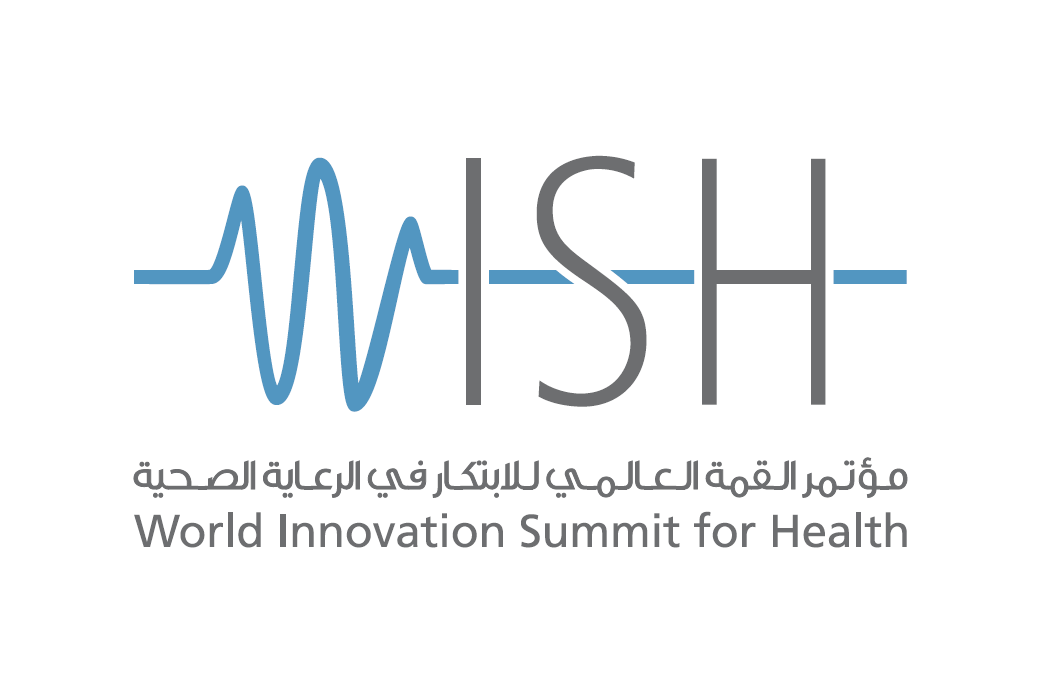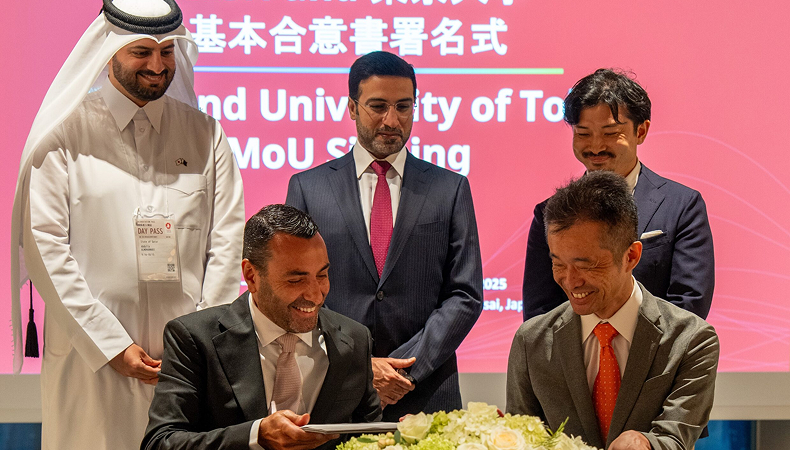New report identifies critical factors key to successful implementation of health innovations

Latest research into the diffusion of health innovation revealed at the World Innovation Summit for Health
New research looking into how different countries can best ensure the successful implementation of new health innovations has been released today at the World Innovation Summit for Health (WISH), a global initiative of Qatar Foundation for Education, Science and Community Development. The report, Global Diffusion of Healthcare Innovation (GDHI): Accelerating the Journey, identifies the critical factors needed to ensure that new health innovations, including new technology, policies and practices, are quickly and effectively adopted across a country’s health system.
The new research focussed on analysis of eight case studies from Argentina, England, Nepal, Singapore, Sweden, the United States and Zambia, where very different health innovations have been successfully and rapidly diffused and have demonstrably resulted in improved outcomes. The essential system enablers identified by the researchers were:
- Vision, strategy and leadership
- A specific organisation, program or initiative to promote diffusion
- Specific funding for research, development and diffusion
- Effective communication channels across healthcare, other industries and with the wider public
Taken together, these four enablers demonstrate the clear value of an organized, funded and well led change management effort, specifically focused on diffusion. In all of the cases studied, rapid adoption did not happen serendipitously; it was purposefully driven.
The report also highlights the importance of engaging the public to create social demand for innovation and ensuring there is adequate time and space for learning and adopting new ways of working. The researchers found that fostering both these behaviours would help provide the impetus for change within healthcare systems.
Greg Parston, Ph.D., Director of GDHI and Executive Advisor to the Director of the Institute of Global Health Innovation, Imperial College London, commented: “Here at WISH we have seen some amazing new medical innovations and heard first hand fantastic examples of innovative practices to improve care for patients. What we hope our new research will do is help policymakers and health professionals move beyond conventional innovation theory and equip themselves with the practical tools and the knowledge needed to help overcome common challenges and to implement and diffuse healthcare innovations more rapidly within their own health systems.”
Professor The Lord Darzi of Denham, Executive Chair of WISH and Director of the Institute of Global Health Innovation at Imperial College of London, said: “The new research into health innovation diffusion which we’re publishing today will prove extremely valuable for policymakers across the world. It’s an essential tool if we are to get better at spreading innovation and meet the modern health challenges of today. If we can identify the type of environment that helps make it easier for countries to look after their people in innovative and accessible ways, then we will all benefit, regardless of where we live or what kind of lifestyle we have.”
The report is part of the ongoing GDHI study, which aims to inspire countries to adopt the best new methods and ideas for the successful diffusion of health innovations, including different practices, techniques and policies. It builds on the 2013 report which assessed the diffusion of health innovations in eight different countries and which identified three levels of influence on how easily and quickly new innovations are adopted within different health systems; ‘health system characteristics’, ‘institutional enablers’ and ‘frontline behaviours’.
Case studies:
1. Fighting vaccine preventable disease in Argentina: the Human Papillomavirus (HPV) Vaccination Program
In 2011 the Argentinian government launched a free national immunization program to provide all 11 year old girls with the HPV vaccine to help prevent cervical cancer – a disease which kills about 1800 women a year in the country. The immunization program was guided by a clear vision and strategy and overseen by a dedicated agency. Key to its success was the effort not only to raise awareness of the vaccine among healthcare providers but also the autonomy given to each province which decided how best to reach the target population using local facilities and local community health professionals. More than 500,000 girls received the full three dose vaccine series between the start of the program and February 2014.
2. Deploying new medical imaging analysis tools in England – PACS
In 2002 the National Programme for information Technology was launched in England to improve the NHS IT infrastructure and a key element of this was the launch and roll-out of PACS – the Picture Archiving and Communication Systems Programme. PACS replaced the old method of film based medical imaging with a digital system allowing images to be stored electronically, viewed on screen and shared more efficiently. Between 2004 and 2007 it was successfully rolled out to 75% of hospital trusts, led by a national leadership structure which paired technical and clinical directors and gave regional deputy directors the responsibility of managing local implementation teams. In over 3 years since its launch all hospital Trusts in England were using the system.
3. Saving lives with nutrient supplements in Nepal: National Vitamin A Program (NVAP)
Nepal’s NVAP program is a policy to combat vitamin A deficiency in children and was introduced thanks to a partnership between national and international stakeholders who wanted to decrease child mortality and blindness, caused by vitamin A deficiency. The program began in 1993 and was led by a group specifically formed to implement and coordinate the initiative nationwide – the Nepal Technical Assistance Group. The initiative targets all pre-school age children, with Female Community Health Volunteers administering the vitamin supplements twice a year. Importantly the initiative also contains an educational element, including cooking demonstrations and media campaigns, to encourage families to eat more vitamin A rich foods. There has been a 26% reduction in mortality for children under five in districts where supplements were provided.
4. Integrating care in Singapore
In order to address the challenge of providing integrated health and social care to Singapore’s rapidly ageing population the Agency for Integrated Care (AIC) was launched in 2008. It aimed to provide a ‘vibrant Care Community enabling people to live well and age gracefully’. The AIC works at an intermediate level of the health and social care system bridging the gap between macro level policymakers and frontline facilities and staff and in 2009 became a private limited company in order to give it greater autonomy and enable it to innovate faster than most government agencies. The AIC has rapidly and successfully expanded the number of integrated care programs and services it runs, since its launch and employed nearly 500 in 2014.
5. Improving traffic safety in Sweden: Vision Zero
Vision Zero is an ambitious Swedish road safety policy based on the premise that no one should be killed or seriously injured in a road traffic accident – a fundamental shift in road safety policy. It was adopted as a long term goal by the Swedish government in 1997 with the Swedish Road Administration designated as the agency responsible for implementing the policy, including piloting a number of road safety interventions, in collaboration with key stakeholders. Since 2000 Sweden has seen traffic fatalities decrease by over 50%.
6. Extending health insurance coverage: Rhode Island health insurance exchange
Rhode Island developed a state-based insurance exchange through HealthSource RI, which operates as an agency of the state Government, in response to the high percentage of the state’s population that was uninsured or underinsured. Following significant stakeholder engagement the HealthSource RI website went live in October 2013, providing price and feature comparisons, increasing transparency and promoting competition between health insurance competitions. The initiative has seen a significant increase in the number of local people with health insurance, including previously underserved groups.
7. Communicating effectively to improve patient care in the US
One case study analyzed by the GDHI research team was the Team Strategies and Tools to Enhance Performance and Patient Safety [TeamSTEPPS] initiative in the US. This evidence based teamwork and communication program focused on improving how medical teams work together and aimed to prevent so many patients dying in the US each year due to medical errors. Since 2007 more than 10,000 people have undergone training at eight regional training centers to become TeamSTEPPS master trainers – helping to diffuse new models of team working to hospitals across the country with resulted in notable improvements in patient outcomes and cost efficiencies. The initiative is now internationally recognised with materials translated into multiple languages.
8. Speeding infants’ access to HIV treatment in Zambia: Programme Mwana
Programme Mwana is a nationwide mobile health program, implemented by the Zambian Ministry of Health to expedite HIV test result delivery and neonatal care, in order to try and combat the country’s HIV epidemic. Early infant diagnosis is challenging because of long distances between health facilities and an often rural and migratory population. The program encourages more use of mobile phones, including text messages, to facilitate communications between central labs and healthcare workers. The initiative was designed in 2010 and successfully piloted in 31 health facilities across three regions. This led to approval from the Zambian Ministry of Health for the national expansion of the scheme from 2011. An evaluation carried out during the pilot stage demonstrated Mwana’s ability to cut the turn-around time for early infant diagnosis of HIV, by nearly 50%.
WISH is spearheaded by Qatar Foundation to inspire and diffuse healthcare innovation and best practice. It remains closely aligned to the vision and mission of QF to unlock human potential and reinforces Qatar’s pioneering role as an emerging center for healthcare innovation.
The full report, along with a summary of all eight case studies, can be found at wish.org.qa
-ENDS-
Notes to Editors:
About the World Innovation Summit for Health:
The World Innovation Summit for Health (WISH) is a global healthcare community dedicated to capturing and disseminating the best evidence-based ideas and practices. WISH is an initiative of Qatar Foundation for Education, Science and Community Development (QF) and is under the patronage of Her Highness Sheikha Moza bint Nasser, its Chairperson.
The inaugural WISH Summit took place in Doha in 2013 and convened more than 1,000 global healthcare leaders. Through international summits and a range of ongoing initiatives, WISH is creating a global community of leading innovators in healthcare policy, research and industry.
Together, they are harnessing the power of innovation to overcome the world’s most urgent healthcare challenges and inspire other stakeholders to action.
Qatar Foundation – Unlocking Human Potential
Qatar Foundation for Education, Science and Community Development is a private, non-profit organisation that is supporting Qatar on its journey from a carbon economy to knowledge economy by unlocking human potential for the benefit of not only Qatar, but the world. Founded in 1995 by His Highness Sheikh Hamad Bin Khalifa Al Thani, the Father Amir of Qatar, QF is chaired by Her Highness Sheikha Moza bint Nasser.
QF carries out its mission through three strategic pillars: education, science and research, and community development. QF’s education pillar brings world-class universities to Qatar to help create an education sector in which young people can develop the attitudes and skills required for a knowledge economy. Meanwhile, its science and research pillar builds Qatar’s innovation and technology capacity by developing and commercialising solutions through key sciences. Finally, its community development pillar helps foster a progressive society while also enhancing cultural life, protecting Qatar’s heritage and addressing immediate social needs in the community.
For a complete list of QF’s initiatives and projects, visit http://www.qf.org.qa
For more information about Qatar Foundation please contact our press office at: pressoffice@qf.org.qa
More News

QF’s WISH and University of Tokyo Sign Landmark Agreement to Advance Global Health Policy at Osaka Expo
Read More
We are pleased to announce the appointment of Dr Taskeen Khan as the new Director of Research and Content at WISH – Qatar Foundation.
Read More
WISH Brings Global Leaders Together at Osaka Expo to Tackle Attacks on Health in Armed Conflict
Read More